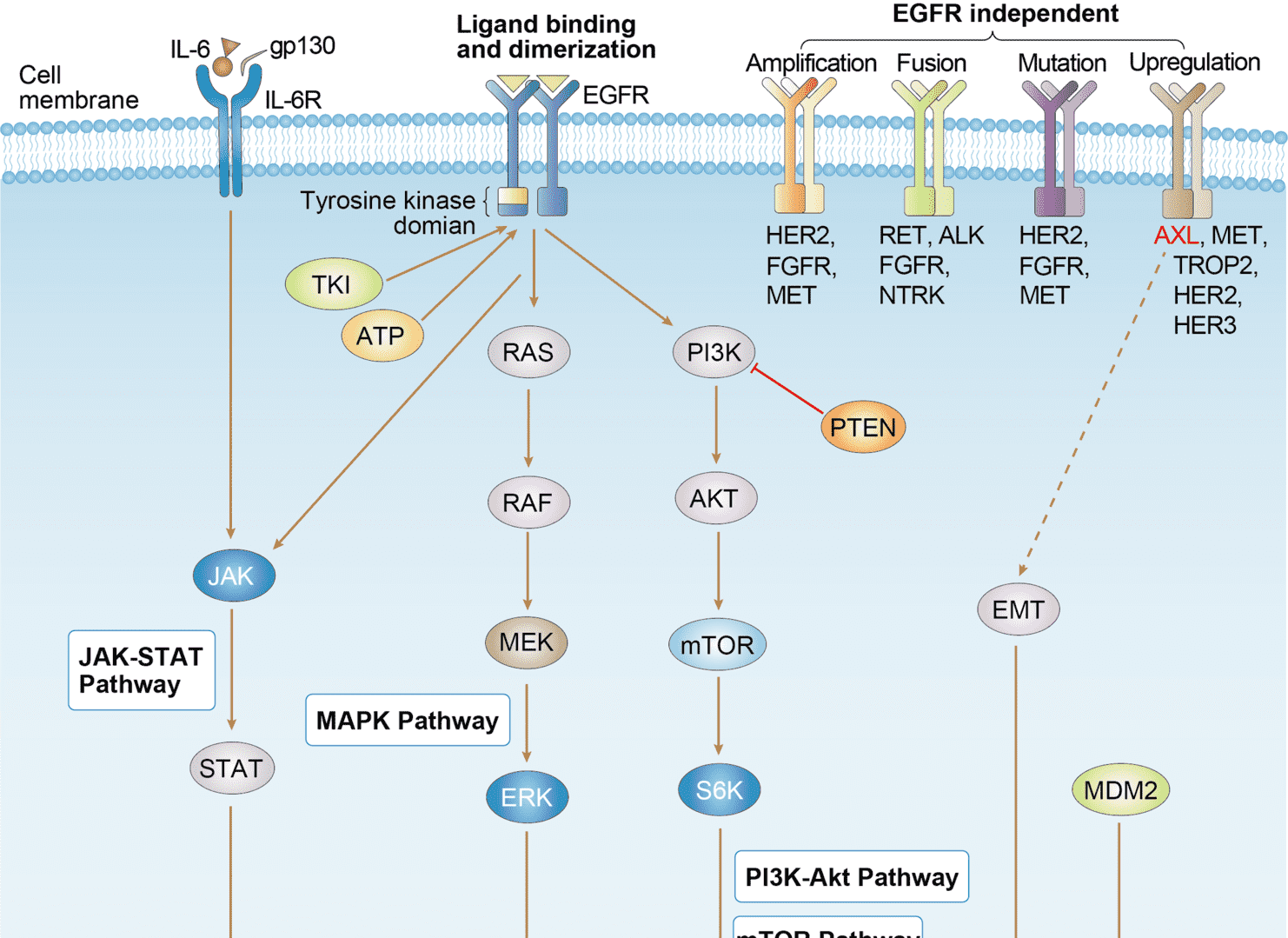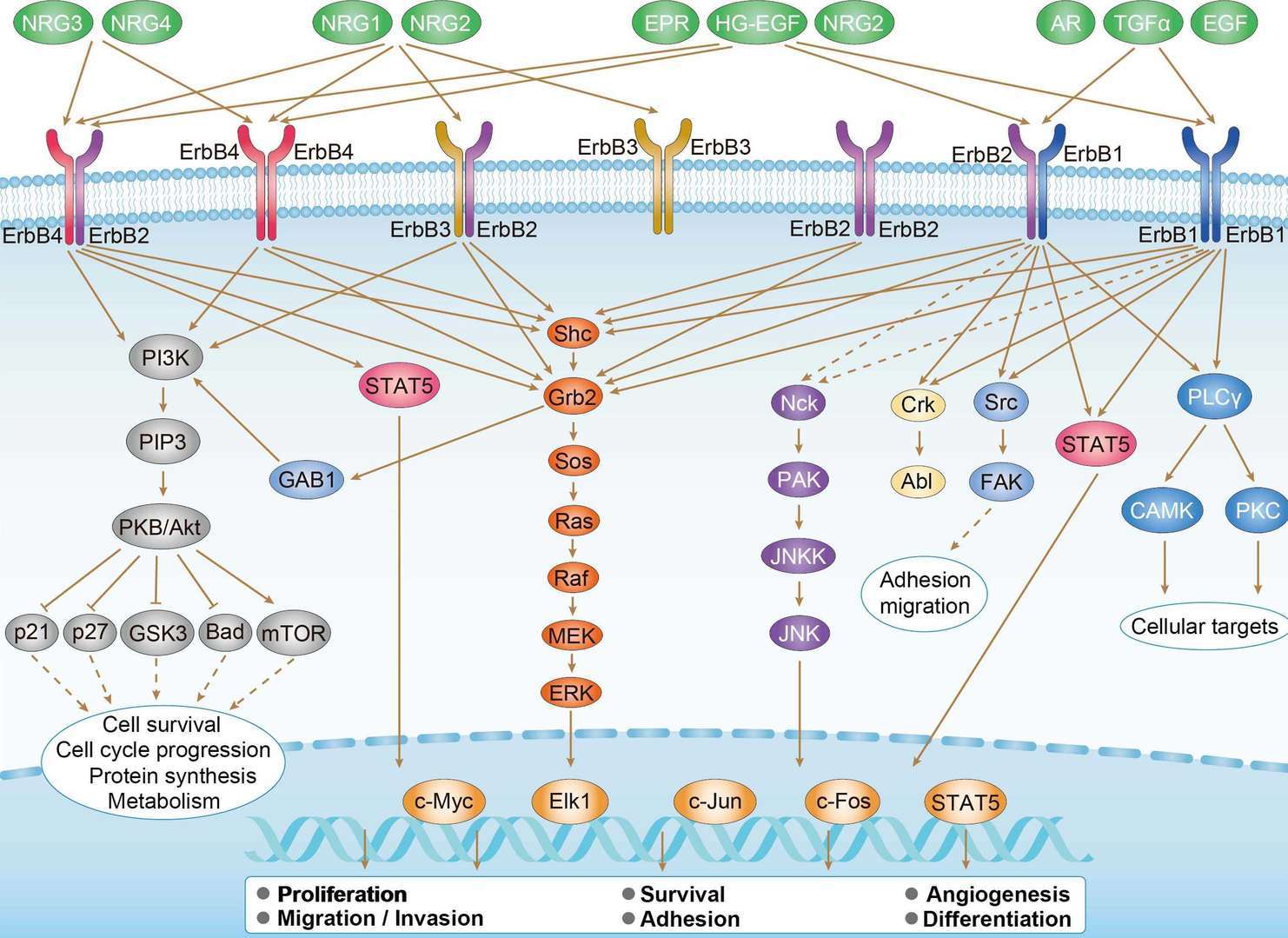AbPlus™ Anti-ERBB3 Magnetic Beads (VS-0724-YC1400)
CAT#: VS-0724-YC1400
The AbPlus Anti-ERBB3 Magnetic Beads (VS-0724-YC1400) is an innovative affinity resin which is bound with anti-ERBB3 specific antibody. The beads were designed for small-scale affinity purification and immunoprecipitation (IP) of ERBB3 protein under native and denaturing conditions.














Specifications
- Applications
- Immunoprecipitation, Protein Purification
- Matrix
- Magnetic bead
- Bead Ligand
- Anti-ERBB3 specific antibody
- Target
- ERBB3
- Immunogen
- Recombinant human ErbB3, aa 1-643.
- Target Species
- Human
- Bead Capacity
- 40 mg/mL
- Bead size
- 25 μm
- Format
- Suspension
- Concentration
- 2 mg/mL
- Buffer
- PBS, pH 7.4
- Preservative
- 0.1% Sodium azide
- Storage
- Stored at 4°C, and is stable for up to 2 years. Do not centrifuge, dry or freeze the magnetic beads.
Applications
- Application Notes
- The beads are in suspension and will settle upon storage. Prior to use, mix the vial gently (do not vortex) to ensure delivery of proper bead volume.
Target
- Introduction
- This gene encodes a member of the epidermal growth factor receptor (EGFR) family of receptor tyrosine kinases. This membrane-bound protein has a neuregulin binding domain but not an active kinase domain. It therefore can bind this ligand but not convey the signal into the cell through protein phosphorylation. However, it does form heterodimers with other EGF receptor family members which do have kinase activity. Heterodimerization leads to the activation of pathways which lead to cell proliferation or differentiation. Amplification of this gene and/or overexpression of its protein have been reported in numerous cancers, including prostate, bladder, and breast tumors. Alternate transcriptional splice variants encoding different isoforms have been characterized. One isoform lacks the intermembrane region and is secreted outside the cell. This form acts to modulate the activity of the membrane-bound form. Additional splice variants have also been reported, but they have not been thoroughly characterized. [provided by RefSeq, Jul 2008]
- Alternative Names
- Erb-B2 Receptor Tyrosine Kinase 3; V-Erb-B2 Avian Erythroblastic Leukemia Viral Oncogene Homolog 3; Tyrosine Kinase-Type Cell Surface Receptor HER3; Human Epidermal Growth Factor Receptor 3; Proto-Oncogene-Like Protein C-ErbB-3; EC 2.7.10.1; HER3; Lethal Congenital Contracture Syndrome 2; Receptor Tyrosine-Protein Kinase ErbB-3; P180-ErbB3;
- Gene ID
- 2065
- UniProt ID
- P21860
Customer Review
There are currently no Customer reviews or questions for VS-0724-YC1400. Click the button above to contact us or submit your feedback about this product.
Submit Your Publication
Published with our product? Submit your paper and receive a 10% discount on your next order! Share your research to earn exclusive rewards.
Related Diseases
Related Signaling Pathways
Downloadable Resources
Download resources about recombinant antibody development and antibody engineering to boost your research.
Datasheet
MSDS
COA
Certificate of Analysis LookupTo download a Certificate of Analysis, please enter a lot number in the search box below. Note: Certificate of Analysis not available for kit components.
See other products for "ERBB3"
Select a product category from the dropdown menu below to view related products.
| CAT | Product Name | Application | Type |
|---|---|---|---|
| NAB-1729-sdAb | Recombinant Anti-human ERBB3 VHH Single Domain Antibody | WB, ICC, ChiP, FA, ELISA | Llama VHH |
| TAB-070CT | Llama Anti-ERBB3 Recombinant Single Domain Antibody (TAB-070CT) | FC, Block | Llama VHH |
| PABC-556 | Recombinant Llama Anti-ERBB3 Single Domain Antibody (PABC-556) | ELISA, SPR | Llama VHH |
| CAT | Product Name | Application | Type |
|---|---|---|---|
| TAB-189 | Human Anti-ERBB3 Recombinant Antibody (TAB-189) | IP, IF, FuncS, FC, Neut, ELISA, ICC | Human IgG1, κ |
| TAB-0033CL | Human Anti-ERBB3 Recombinant Antibody (TAB-0033CL) | ELISA, FuncS, Inhib, FC | Human IgG |
| TAB-0034CL | Human Anti-ERBB3 Recombinant Antibody (TAB-0034CL) | ELISA, FuncS, Inhib, FC | Human IgG |
| TAB-0035CL | Human Anti-ERBB3 Recombinant Antibody (TAB-0035CL) | ELISA, FuncS, Inhib, FC | Human IgG |
| TAB-0036CL | Human Anti-ERBB3 Recombinant Antibody (TAB-0036CL) | ELISA, FuncS, Inhib, FC | Human IgG |
| CAT | Product Name | Application | Type |
|---|---|---|---|
| TAB-892 | Anti-Human ERBB3/ErbB 3 Recombinant Antibody (Seribantumab) | IF, IP, Neut, FuncS, ELISA, FC, ICC | IgG2 - lambda |
| TAB-057CT | Human Anti-ERBB3 Recombinant Antibody (TAB-057CT) | Inhibion, ELISA | Humanized antibody |
| TAB-058CT | Human Anti-ERBB3 Recombinant Antibody (TAB-058CT) | ELISA, Inhib, Cty, IHC, WB, FC | Human IgG1, κ |
| TAB-059CT | Anti-Human HER3 Recombinant Antibody (LMAb3) | WB, ELISA, Inhibition, FC | Humanized antibody |
| TAB-063CT-F(E) | Human Anti-ERBB3 Recombinant Antibody; Fab Fragment (TAB-063CT-F(E)) | ELISA, Inhib, FC | Humanized Fab |
| CAT | Product Name | Application | Type |
|---|---|---|---|
| AGTO-L074E | HRGβ2-PE immunotoxin | Cytotoxicity assay, Functional assay |
| CAT | Product Name | Application | Type |
|---|---|---|---|
| TAB-0552CL | Mouse Anti-ERBB3 Recombinant Antibody (TAB-0552CL) | ELISA, Inhib | Mouse IgG |
| TAB-0552CL-F(E) | Mouse Anti-ERBB3 Recombinant Antibody; Fab Fragment (TAB-0552CL-F(E)) | ELISA, Inhib | Mouse Fab |
| TAB-0553CL-F(E) | Mouse Anti-ERBB3 Recombinant Antibody; Fab Fragment (TAB-0553CL-F(E)) | ELISA, Inhib | Mouse Fab |
| TAB-060CT-S(P) | Rabbit Anti-ERBB3 Recombinant Antibody; scFv Fragment (TAB-060CT-S(P)) | Inhib, ELISA | Rabbit scFv |
| TAB-064CT-S(P) | Mouse Anti-ERBB3 Recombinant Antibody; scFv Fragment (TAB-064CT-S(P)) | ELISA, FC | Mouse scFv |
| CAT | Product Name | Application | Type |
|---|---|---|---|
| TAB-061CT | Human Anti-ERBB3 Recombinant Antibody (TAB-061CT) | Inhib, ELISA | Chimeric (Rabbit/Human) antibody |
| TAB-061CT-S(P) | Human Anti-ERBB3 Recombinant Antibody; scFv Fragment (TAB-061CT-S(P)) | Inhib, ELISA | Human scFv |
| TAB-061CT-F(E) | Human Anti-ERBB3 Recombinant Antibody; Fab Fragment (TAB-061CT-F(E)) | Inhib, ELISA | Chimeric (Rabbit/Human) Fab |
| CAT | Product Name | Application | Type |
|---|---|---|---|
| NEUT-738CQ | Mouse Anti-ERBB3 Recombinant Antibody (clone CBL932) | Neut, IP | Mouse IgG1 |
| NEUT-739CQ | Mouse Anti-ERBB3 Recombinant Antibody (clone CBL483) | FC, CyTOF®, ELISA, Neut | Mouse IgG1 |
| NEUT-740CQ | Human Anti-ERBB3 Recombinant Antibody (clone CBL1019) | Neut | Human IgG1, κ |
| NEUT-741CQ | Human Anti-ERBB3 Recombinant Antibody (clone CBL1020) | Neut | Human IgG1, κ |
| NEUT-742CQ | Mouse Anti-ERBB3 Recombinant Antibody (NEUT-742CQ) | Neut | Mouse IgG1 |
| CAT | Product Name | Application | Type |
|---|---|---|---|
| MOR-1179 | Hi-Affi™ Rabbit Anti-ERBB3 Recombinant Antibody (clone DS1179AB) | ICC, IF, WB | Rabbit IgG |
| CAT | Product Name | Application | Type |
|---|---|---|---|
| HPAB-0286-YC-S(P) | Mouse Anti-ERBB3 Recombinant Antibody (clone 1153); scFv Fragment | ELISA, FuncS, FC | Mouse scFv |
| HPAB-0287-YC-S(P) | Mouse Anti-ERBB3 Recombinant Antibody (clone 920104); scFv Fragment | ELISA, FuncS, FC | Mouse scFv |
| HPAB-0288-YC-S(P) | Mouse Anti-ERBB3 Recombinant Antibody (clone 1126); scFv Fragment | ELISA, FuncS, FC | Mouse scFv |
| HPAB-0289-YC-S(P) | Mouse Anti-ERBB3 Recombinant Antibody (clone 12511); scFv Fragment | ELISA, FuncS, FC | Mouse scFv |
| HPAB-0290-YC-S(P) | Human Anti-ERBB3 Recombinant Antibody; scFv Fragment (HPAB-0290-YC-S(P)) | ELISA, FuncS, FC | Human scFv |
| CAT | Product Name | Application | Type |
|---|---|---|---|
| HPAB-0022-WJ-F(E) | Human Anti-ERBB3 Recombinant Antibody; Fab Fragment (HPAB-0022-WJ-F(E)) | ELISA | Human Fab |
| HPAB-0024-WJ-F(E) | Human Anti-ERBB3 Recombinant Antibody; Fab Fragment (HPAB-0024-WJ-F(E)) | ELISA | Human Fab |
| HPAB-0025-WJ-F(E) | Human Anti-ERBB3 Recombinant Antibody; Fab Fragment (HPAB-0025-WJ-F(E)) | ELISA | Human Fab |
| HPAB-0220-FY-F(E) | Human Anti-ERBB3 Recombinant Antibody (clone Hu-E14); Fab Fragment | ELISA, WB | Humanized Fab |
| HPAB-AP084-YC-F(E) | Human Anti-ERBB3 Recombinant Antibody; Fab Fragment (HPAB-AP084-YC-F(E)) | ELISA, FuncS | Humanized Fab |
| CAT | Product Name | Application | Type |
|---|---|---|---|
| AFC-TAB-H21 | Afuco™ Anti-ERBB3 ADCC Recombinant Antibody, ADCC Enhanced (AFC-TAB-H21) | FC, IP, ELISA, Neut, FuncS, IF | ADCC enhanced antibody |
| AFC-TAB-422CQ | Afuco™ Anti-ERBB3 ADCC Recombinant Antibody, ADCC Enhanced (AFC-TAB-422CQ) | ELISA, IHC, FC, IP, IF, BL | ADCC enhanced antibody |
| AFC-TAB-189 | Afuco™ Anti-ERBB3 Recombinant Antibody (AFC-TAB-189), ADCC Enhanced | IP, IF, FuncS, FC, Neut, ELISA | Human IgG1, κ |
| AFC-TAB-H22 | Afuco™ Anti-ERBB3 ADCC Recombinant Antibody, ADCC Enhanced (AFC-TAB-H22) | ELISA, IP, FC, FuncS, Neut, IF | ADCC enhanced antibody |
| AFC-TAB-892 | Afuco™ Anti-ERBB3 ADCC Recombinant Antibody, ADCC Enhanced (AFC-TAB-892) | IF, IP, Neut, FuncS, ELISA, FC | ADCC enhanced antibody |
| CAT | Product Name | Application | Type |
|---|---|---|---|
| HPAB-2323LY | Human Anti-ERBB3 Recombinant Antibody (clone A) | ELISA, RIA | Human IgG |
| HPAB-0711-WJ | Human Anti-ERBB3 Recombinant Antibody (HPAB-0711-WJ) | ELISA | Human IgG1 |
| HPAB-0712-WJ | Human Anti-ERBB3 Recombinant Antibody (HPAB-0712-WJ) | ELISA | Human IgG1 |
| HPAB-0713-WJ | Human Anti-ERBB3 Recombinant Antibody (HPAB-0713-WJ) | ELISA | Human IgG1 |
| HPAB-0714-WJ | Human Anti-ERBB3 Recombinant Antibody (HPAB-0714-WJ) | ELISA | Human IgG1 |
| CAT | Product Name | Application | Type |
|---|---|---|---|
| VS-0424-XY92 | AbPlus™ Anti-ERBB3 Magnetic Beads (Duligotuzumab) | IP, Protein Purification |
| CAT | Product Name | Application | Type |
|---|---|---|---|
| VS-0125-FY22 | Human Anti-ERBB3 (clone H3) scFv-Fc Chimera | ELISA, Inhib | Human IgG1, scFv-Fc |
| VS-0125-FY23 | Human Anti-ERBB3 (clone PM6) scFv-Fc Chimera | WB, ELISA, IHC, FuncS, BI | Human IgG1, scFv-Fc |
| CAT | Product Name | Application | Type |
|---|---|---|---|
| VS-0425-YC478 | Recombinant Anti-ERBB3 Vesicular Antibody, EV Displayed (VS-0425-YC478) | ELISA, FC, Neut, Cell-uptake |
| CAT | Product Name | Application | Type |
|---|---|---|---|
| VS-0525-XY2337 | Anti-ERBB3 Immunohistochemistry Kit | IHC | |
| VS-0525-XY2338 | Anti-Mouse ERBB3 Immunohistochemistry Kit | IHC |
| CAT | Product Name | Application | Type |
|---|---|---|---|
| VS-0525-YC72 | Recombinant Anti-ERBB3 (Domain 1 x Domain 3) Biparatopic Antibody, Tandem scFv (Clone 1153 x Clone 920104) | ELISA, FC | Tandem scFv |
| VS-0525-YC74 | Recombinant Anti-ERBB3 (Domain 3 x Domain 4) Biparatopic Antibody, Tandem scFv (Clone 920104 x Clone 1126) | ELISA, FC | Tandem scFv |
Popular Products

Application: IF, IP, Neut, FuncS, ELISA, FC, ICC

Application: Neut, ELISA, IF, IP, FuncS, FC, WB

Application: WB, ELISA, FuncS

Application: WB, ELISA, FuncS

Application: WB, ELISA, FuncS

Application: WB, ELISA, FuncS, IB, FC, SPR, Apop

Application: ELISA, IHC, FC, IP, IF, FuncS

Application: ELISA, IHC, FC, IP, IF, FuncS

Application: ELISA, FuncS
-4.jpg)
Application: FC, FuncS, IA, IF, IP, IHC

Application: IF, IP, Neut, FuncS, ELISA, FC

Application: ELISA, FC, Inhib, IHC-Fr, WB, IP

Application: ELISA, FC, WB, Inhib, IHC
For research use only. Not intended for any clinical use. No products from Creative Biolabs may be resold, modified for resale or used to manufacture commercial products without prior written approval from Creative Biolabs.
This site is protected by reCAPTCHA and the Google Privacy Policy and Terms of Service apply.

















 EGFR Tyrosine Kinase Inhibitor Resistance
EGFR Tyrosine Kinase Inhibitor Resistance
 ErbB Signaling Pathway
ErbB Signaling Pathway










